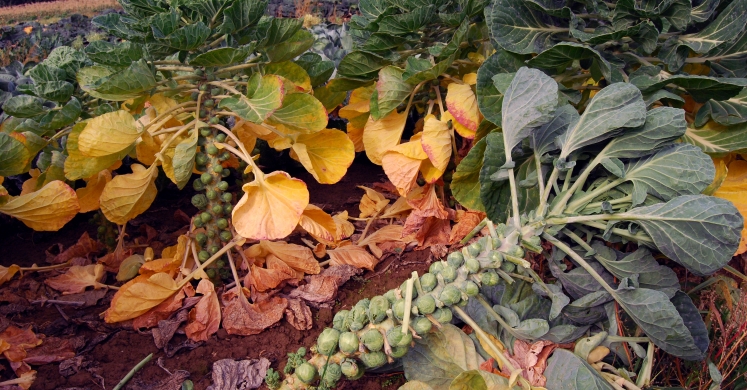Blog

#bioPGH Blog: Brassica Vegetables
 A resource of Biophilia: Pittsburgh, #bioPGH is a weekly blog and social media series that aims to encourage both children and adults to reconnect with nature and enjoy what each of our distinctive seasons has to offer. From the best times to plant seasonal flora and enjoy their peak blooms, to astronomical events and creatures to keep an eye and ear out for, Phipps will keep you in the know with what’s going on in our environment!
A resource of Biophilia: Pittsburgh, #bioPGH is a weekly blog and social media series that aims to encourage both children and adults to reconnect with nature and enjoy what each of our distinctive seasons has to offer. From the best times to plant seasonal flora and enjoy their peak blooms, to astronomical events and creatures to keep an eye and ear out for, Phipps will keep you in the know with what’s going on in our environment!
Brussels sprouts. Does the sight of them on your dinner plate make you gag? If so, you’re not alone. But did you know that the majority of the fall harvest vegetables are related to them? Brassica is a genus of plants in the mustard family (Brassicaceae), many of which have been cultivated for food, and includes Brussels sprouts, cabbage, cauliflower, broccoli and bok choy, to name just a few. Ten of the common fall crops in Pennsylvania are actually derived from a single species, Brassica oleracea. But how did veggies of such wide-ranging shapes and sizes come from a single plant?
Brassica oleracea is actually known as wild cabbage in its uncultivated form: a small, weedy plant native to Europe which tends to grow on rocky, windswept cliffs. But thanks to thousands of years of cultivation by farmers, who picked certain traits to perpetuate in the next generation of plants, we now have an extraordinary diversity of cultivars, or plant varieties, stemming (pun intended) from this single species.
Through the gradual practice of picking and choosing certain plant traits to favor year after year – biologists call this process artificial selection – farmers slowly transformed nearly every plant structure into a new and different edible plant. Kale, collard greens and Chinese broccoli are derived from the leaves. The terminal buds have become cabbage, while the lateral buds are now Brussels sprouts. The stem has developed into kohlrabi. The inflorescences (flower clusters) have emerged as broccoli and cauliflower. Despite their newfound ubiquity on restaurant menus, some people strongly dislike these vegetables. Is this because these cabbage relatives were traditionally boiled into unpalatable mush, or because of a more complex reason?
It turns out that cabbage and its relatives have high levels of sulphur-containing compounds called glucosinolates, and some people have a genetic makeup that induces an extremely bitter taste upon consumption, so they probably are not fans of this group of veggies. So if you’re a cabbage connoisseur, consider yourself lucky! Fortunately, roasting Brassica can reduce these compounds and make them taste sweeter. This article provides some cooking tips for these fall vegetables.
Connecting to the Outdoors Tip: While it’s too late to plant most Brassica species now, “cole” crops (from the Latin word caulis, meaning cabbage) are commonly harvested in the early fall through winter, so they'll be widely available in grocery stores and farmers' markets this time of year. This article provides useful information on planting such crops, which can be grown successfully in either the early spring or late summer. Some Brassica, like Brussels sprouts, taste better after a frost, because the plants convert starches to sugars, which act like anti-freeze to protect the plant from cold temperatures. However, if you don’t have any cabbage relatives in your backyard, you could visit some farms that might be growing them during the Butler County Farm tour on Sat., Oct. 1.
Continue the Conversation: Share your nature discoveries with our community by posting to Twitter and Instagram with hashtag #bioPGH, and R.S.V.P. to attend our next Biophilia: Pittsburgh meeting.
Resources:
Brassica oleracea | Wikipedia.org
The Extraordinary Diversity of Brassica Oleracea | Botanist in the Kitchen
Simple Tricks Can Tame the Taste of Broccoli and its Cousins | NPR.org
Growing Cole Crops | Penn State Extension
Sweeter After a Frost | Lopez Island Kitchen Gardens
Butler County Farm Tour | Visit Butler County Pennsylvania
Select photos © Wikimedia User: Gohnarch (CC-BY-SA-3.0); Wikimedia User: Leon Brocard (CC-BY 2.0)
